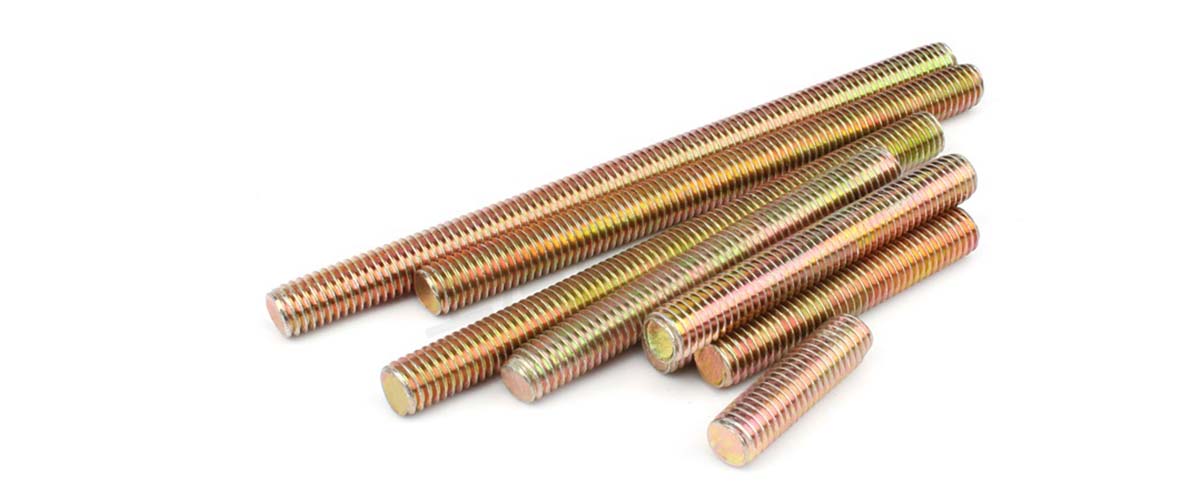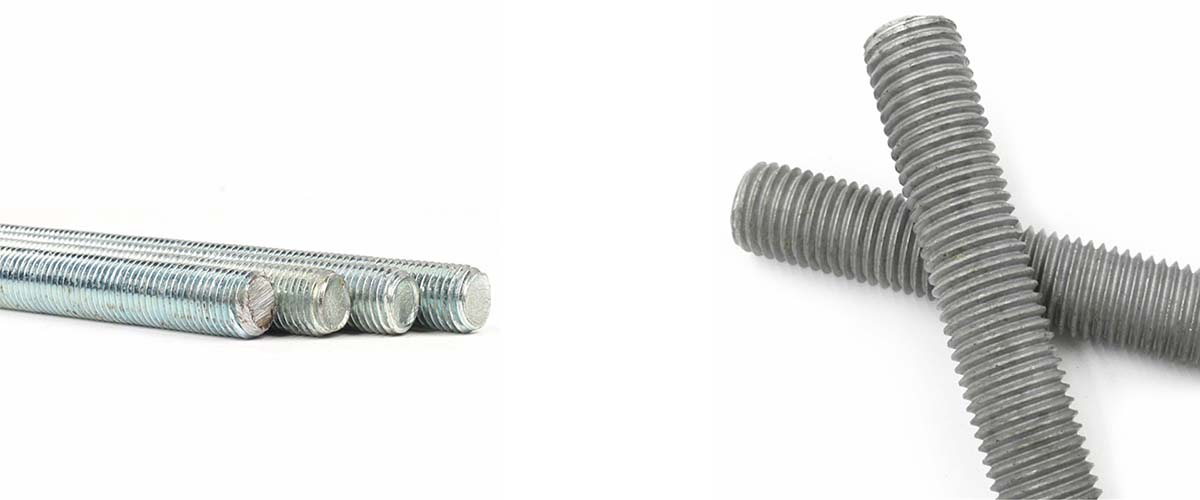

Threaded rod, as the name suggests, is a metal rod that has threads along its entire length. It is usually made of carbon steel, galvanized steel or stainless steel. Threads allow bolts and other types of fasteners to be attached to metal rods for many different construction applications.
Threaded rods are often used to join two objects together, such as wood or metal, or to provide a connection between concrete and another material.

How are threaded rods made?
Threaded rods are made of round steel of specified grade and diameter.
Screws of standard diameters and grades are usually produced in batches by thread rolling machines. The process involves passing a round bar through two hardened steel rollers, which imprint the threads onto the bar. These rollers are set at specific intervals and rotate perpendicular to the direction in which the round rod passes. The extremely high pressure exerted by these rollers shapes the round rod into a threaded rod. In this highly automated process, the round rod is forced through rollers, which imprint threads on the surface. The threaded rod is then sawed to size and the edges chamfered to obtain a smooth, workable finished surface.
Non-standard screws are usually made by cutting. The round rod is cut to a slightly longer length than required and then passed through a machine that cuts threads from the surface as it runs. The threaded rod is then cut to length and chamfered. This technology is slower than thread rolling and therefore more expensive.
Threaded rods are typically made from stainless steel, galvanized mild steel, or carbon steel, depending on the end application. In addition, Yunteng has various surface treatments and different standards.

What is the purpose of threaded rod?
Threaded rods can be used wherever large screws, bolts or anchor bolts are required, but the primary use of threaded rods is when the required length or diameter exceeds that of traditional bolts or screws. A prime example of this use is large construction projects such as bridges. In this case, the required length and diameter are far greater than a conventional bolt, so a threaded rod is required instead.
How to choose the pitch of a fully threaded rod
When choosing the pitch of fully threaded studs, it is important to consider factors such as load-bearing requirements, usage environment, and frequency of installation and removal: For heavy loads, fine-pitch studs will provide better load-carrying capacity.
For normal loads, coarse pitch studs will suffice. In environments such as high temperature, high humidity, and vibration, fine spacing can ensure a more reliable and stable connection. On the contrary, in corrosive environments, coarse pitch is more resistant to corrosion due to its larger lubrication gap. If you need to remove bolts frequently, it is recommended to choose coarse-pitch studs, which are easy to install and remove and have good durability. If the bolt does not require frequent movement after a single installation, then fine-pitch studs are a better choice.
Another area of application for screws is high tension and vibration loads, such as in any internal combustion engine block.
There are also Threaded Rod FAQs here.
If you are looking for suitable threaded rods, Hebei Yunteng has been deeply involved in the fastener industry for more than 30 years. It has excellent professional technology, multiple production lines, and sufficient inventory. Available in a variety of metal types and sizes, and can be cut to the size you need. shop now